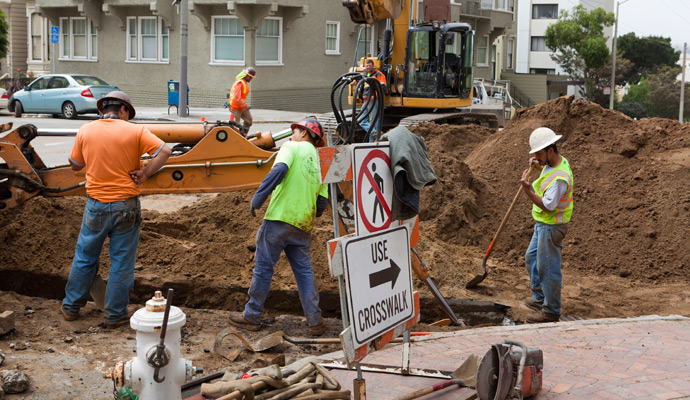Labor Pains
The combination of tight markets and a flurry of state actions on minimum wages is quickly imposing new local standards on employers.
The standards under which companies operate can change very quickly. A new technology — the Internet, electricity — can burst on the scene and establish a new normal. As the balance between supply and demand shifts, market forces can impose new standards — at both national and local levels. And by issuing regulations and enacting new laws, government frequently reshapes the boundaries of competition.
The U.S. labor market is providing us with a very nice case study of just how quickly standards can change. In many ways, it has long been a misnomer to speak of a national U.S. labor market. What it costs to employ and train people, how easy or difficult it is to fill an open position — these factors have always varied widely from city to city and from state to state. Some of the variance can be chalked up to big macroeconomic forces. It’s no secret that Silicon Valley is undergoing one of its historic booms. The unemployment rate in the San Francisco region, overall, is 3.4 percent.
But conditions can change — often quite rapidly. Jackie Calmes of the New York Times reported in early April on Elkhart, Ind., a city near South Bend. The economy in the area relies heavily on recreational vehicle manufacturing, and Elkhart was highly depressed five or six years ago. But today, thanks to persistently rising demand for RVs, general expansion, and low population growth, the unemployment rate is down to 3.8 percent. Dan Browning, an executive at an Elkhart homeless shelter, told the Times that companies are coming to him seeking dozens of employees. “Now the employers are desperate,” he said. “Before it was the workers who were desperate.”
At the same time, a second state-and-local dynamic is altering the calculus for employers: wage and working condition standards. Wages have become a key point of discussion and debate. The overriding fact of our economy, identified by French economist Thomas Piketty in a somewhat dense academic manner (and by many politicians in a less sophisticated matter) is that wages for typical workers haven’t risen in the recent expansion. This has partially to do with markets — in slack periods, no company should pay for any more input than is absolutely necessary. But as I’ve argued, the divergence can be partially ascribed to norms. Left to their own devices, by and large, companies have chosen not to raise wages — even when many of them could. And generally speaking, the system has not expected employers to do so.
That’s changing. And quickly. The stagnation of median wages has stimulated a social and political desire to have government impose higher wages and better working conditions, typically in the form of a higher minimum wage. Due to the partisan makeup of Washington, DC, there hasn’t been much action on that front. Business organizations and their allies have generally opposed measures to lift the federal minimum wage, which has been stuck at $7.25 since 2009.
As a result, labor activists and their allies have turned to areas where the partisan dynamics are more welcoming: states and big cities. So in 2014 and 2015, a series of small minimum wage increases went into effect at the state level. The movement is now giving way to truly large increases at the state and local levels, including in two of the most populous states in the country: In the past week, both California (population: 38.8 million) and New York (population: 19.7 million) have enacted legislation that will substantially raise the states’ respective minimum wages and put them on a path to rise to $15 per hour in coming years. That represents a really significant shift in standards for employment in states that account for about 18 percent of the country’s total population, and that, because of their comparatively high wealth, account for about 22 percent of total U.S. economic output.
The movement is now giving way to truly large increases at the state and local levels, including in two of the nation's most populous states.
More complications are on the way. Cities can impose their own standards on wages and working conditions: On April 5, San Francisco passed a law requiring that employers grant workers six weeks of fully-paid family leave.
Regardless of whether you think these are good ideas or bad ideas, ruinous or brilliant, they represent new facts on the ground. And as long as Washington gridlock forestalls the possibility of national action on such issues, there is likely to be more regional, state, and local standard setting in the coming years.
For employers operating in many locations, this means that the once comparatively simple matter of how much to pay a worker, how to fill an open position, and how to calculate total employment costs is becoming vastly more tricky. In 2009, at the depths of the recession, companies around the country were generally able to find the people with the skills they needed and hire them at the wage they wanted to pay — and they had a pretty good sense of how they could do so while meeting local standards and ensuring profitable operation. It wasn’t a one-size-fits-all strategy, by any means. But there was a relatively high level of uniformity.
That’s no longer the case. The variance in standards and market conditions has widened across states, and even within states (New York City is an entirely different labor market, with meaningfully different wage and working conditions standards than, say, Utica). Increasingly, companies may not just need a different hiring strategy for different states and cities. They may need to start developing entirely different regional business models.




